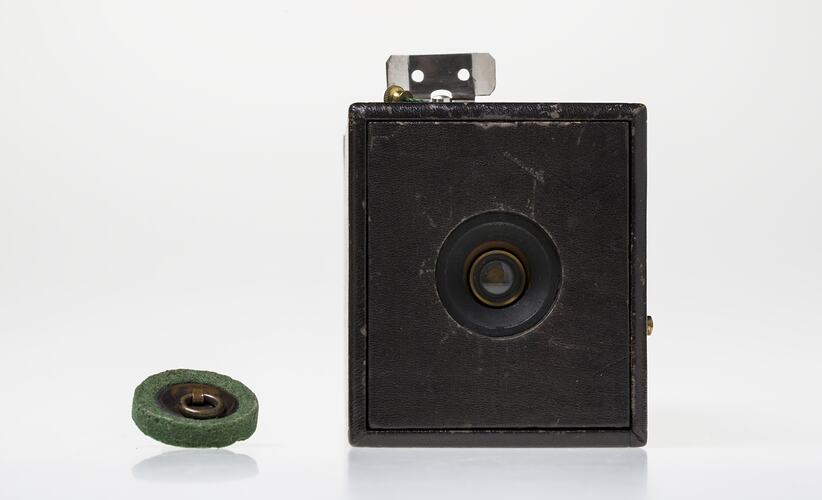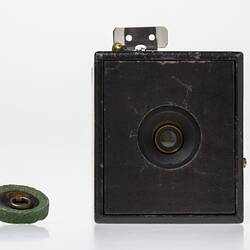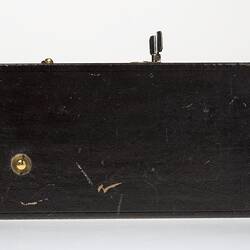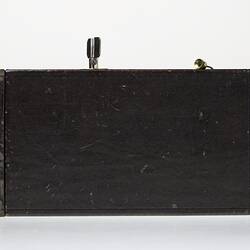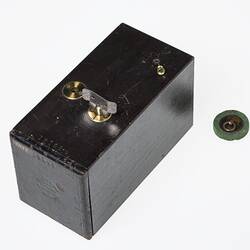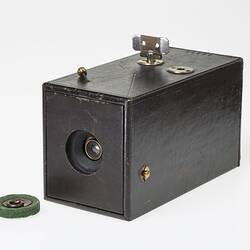Summary
Kodak No.1 was manufactured by Eastman Kodak Co., Rochester, New York, U.S.A., circa 1889.
It was a landmark camera in the history of photography. It was the first camera to use roll film, George Eastman having taken out a patency on this type of roll film camera in 1888. Eastman first coined the name Kodak for that camera. This was a huge technological shift from the more cumbersome and professional equipment used in plate glass and plate film photography until then. The Kodak was inexpensive, easy to use, easy to carry and was immensely popular, so much so, that it made photography readily accessible to the everyday person. Eastman's motto: "You press the button, we do the rest." was coined with the arrival of this camera. Until then, photography was essentially the domain of the professional photographer both because of the complexities of the medium, the heavy equipment and the inherent cost. The Kodak was made of a leatherette-covered card box. It had a simple viewfinder and lens with a drawstring shutter mechanism and a metal film holder inside the body. It could take 100 pictures on one roll of film.
Similar box cameras which utilised glass plates were in existence before the Kodak No.1 and were commonly referred to as 'detective cameras'. Eastman's patent application for the Kodak No. 1 makes reference to the fact that his invention '... relates more particularly to improvements in that class of photographic apparatus known as detective cameras'.
Physical Description
Black, rectangular wooden box camera encased in leather, Kodak No. 1. Felt lens cover and drawstring shutter mechanism. Camera must be returned to manufacturer for opening.
More Information
-
Collecting Areas
-
Acquisition Information
Purchase
-
Manufacturer
Eastman Kodak Company, Rochester, New York, United States of America, circa 1889
Date circa 1889. -
Inscriptions
Engraved in leather on back: "PAT. [Illegible.] / OTHER / PATENTS / APPLIED FOR / IN / ALL COUNTRIES". Engraved in leather on top and back: "13198".
-
Model Name or Number
-
Brand Names
-
Classification
-
Category
-
Discipline
-
Type of item
-
Overall Dimensions
90 mm (Width), 105 mm (Depth), 175 mm (Height)
-
References
George Eastman Archive - Item E131.00003 [Link 1]
-
Keywords
Cameras, Optics, Photographic Equipment, Photography, Lenses, Leather Products
